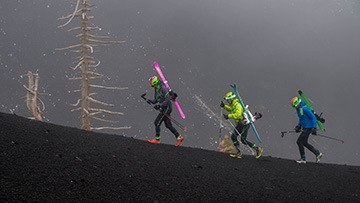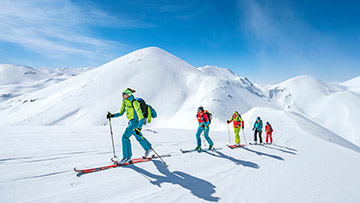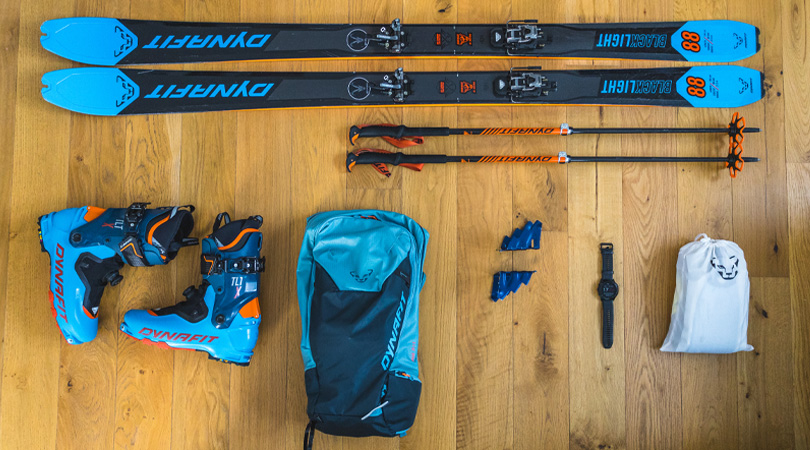Trail Running: The 5 ultimate tips for your race
In order for you to show in a race what you can do, the proper preparation is critical. Sports scientist Lukas Naegele shares his 5 ultimate tips for your next race – from performance diagnostics and training planning to tapering. Get all of Lukas’ expertise and get yourself “ready to race”!
Performance diagnostics How do I rate now?
When you want to achieve a goal, then you should start out knowing where you stand at the moment. To target your training preparation for a race, you need to need your current level. As a part of a performance diagnostic, you can find out your actual state of health, exercise capacity and performance level. With the aid of this data and the parameters attained for example for heart rate, lactate threshold and VO2 max, training can be individually designed so progress can be ideally overseen and guided.
Do you want to find out all there is to know about performance diagnostics? In this video tutorial, you can find out from Lukas more about this topic:
Extra tip: Off to the DYNAFIT Athlete Center
A physiologic performance diagnostic is offered at different facilities, such as sport medicine offices or university research labs. At the DYNAFIT Athlete Center at Sports Innovated in Chiemgau, Germany, the sports performance approach is wholistic. The center is open to all, and it is the first place to go for both pros and recreational athletes.
Train properly: Endurance, running ABCs, and strength training
If you want to find success in a race, then you must train. There is no question about this and there is no no getting around it. But what does it really mean to train right? Trail running is an endurance sport and like with all endurance sports, training must be geared precisely to improve muscular energy supply, i.e. the aerobic and anaerobic metabolism. In order to withstand the specialized stress during trail running and in particular of downhill running, balance training and strength training are a must. To improve total running efficiency, regular running ABC exercises should also be in the plan, such as high-knees, butt-kickers and skipping. And of course,you’ll need to accumulate vert and kilometers to get your body used to the mechanical stressors.
Do you want to train properly? Get more insights from Lukas about for example training periodization, regeneration, or alternative training types in Part 2 of his Video Tutorial:
Which running shoe is best for muddy terrain? How do I pack my backpack to ensure everything is quickly accessible. What can I eat during a run to alwaysmaintain my energy? You need to answer all of these questions prior to a race. A race is no time for experiments. Brand new shoes or an alleged amazing energy bar from your neighbor has no business at the starting line. All of your equipment and clothing should be tested out in various conditions prior to a race to be sure they are comfortable and ready to perform. In particular on long runs is the question of nutrition key to reach the finish line in good shape. Electrolyte drinks, gels or bars are not all tolerated by everyone identically. Some runners prefer dates, bananas or even a cola to stay on track.
Are you wondering why nutrition is so essential for athletes and what DYNAFIT athletes themselves eat during races? In our blog article, find out all the answers:
Tapering: The calm before the storm
Right before the race just one more extra long workout? Not a good idea! It’s too late now to make up for any failures or mistakes in a training plan. You can’t work wonders in the last few weeks before a big run. Au contraire: If you really put the pedal to the medal in the final training phase you can do more harm than good. It’s not unusual that big performance breakdowns, exhaustion on race day, or even injuries stem from an overload of intense training all the way up to the end. The magical word is instead: Tapering.
In tapering, what it comes down to at its core is to maintain your trained conditioning up to race day, but not to try to improve it any more. The body has to recover and get the chance to heal any smaller injuries and to regenerate. That gets toughness and a fresh springiness for race day. So just put up your feet when D-Day edges closer.
Have you not ever heard much about tapering? In our blog article, find out everything about this topic and gain insights into the tapering plan of Hannes Namberger.
Mental strength: Your psyche takes part, too
For a race, you not only need to train your body, you also need to train your psyche. In particular for ultra-long distances of 100k and longer, willpower and spirit are critical to get to the finish line. Willpower and spirit can be trained just as muscles can be. That’s why you must clearly define your goals. Is it “only” about making it to the finish line, or do you want to achieve a specific time or place? What difficulties can be expected out there, and how can you overcome them?
Visualizing the race beforehand and going through possible scenarios in your head can be very helpful. What do you do when you legs get really heavy? How do you overcome a mental low spot? And how can you mobilize all of your energy when you are in a head-to-head race with your biggest adversary?
Lukas share more practical tips for race day in his Video Tutorial:
With this in mind: #SPEEDUP! See you at the starting line!

Etna Speed Rush
Read more
Ski Touring Crete
An experience report about an exotic ski touring trip to Crete, endless snow-covered expanse in the Lefka Ori mountains and Greek hospitality.
Read more
What's inside my skimo pack?
Are you planning a ski tour? Our packing list will help you optimize your preparation. From the right equipment to key essentials, you will find everything you need for the perfect ski tour.
Read more















